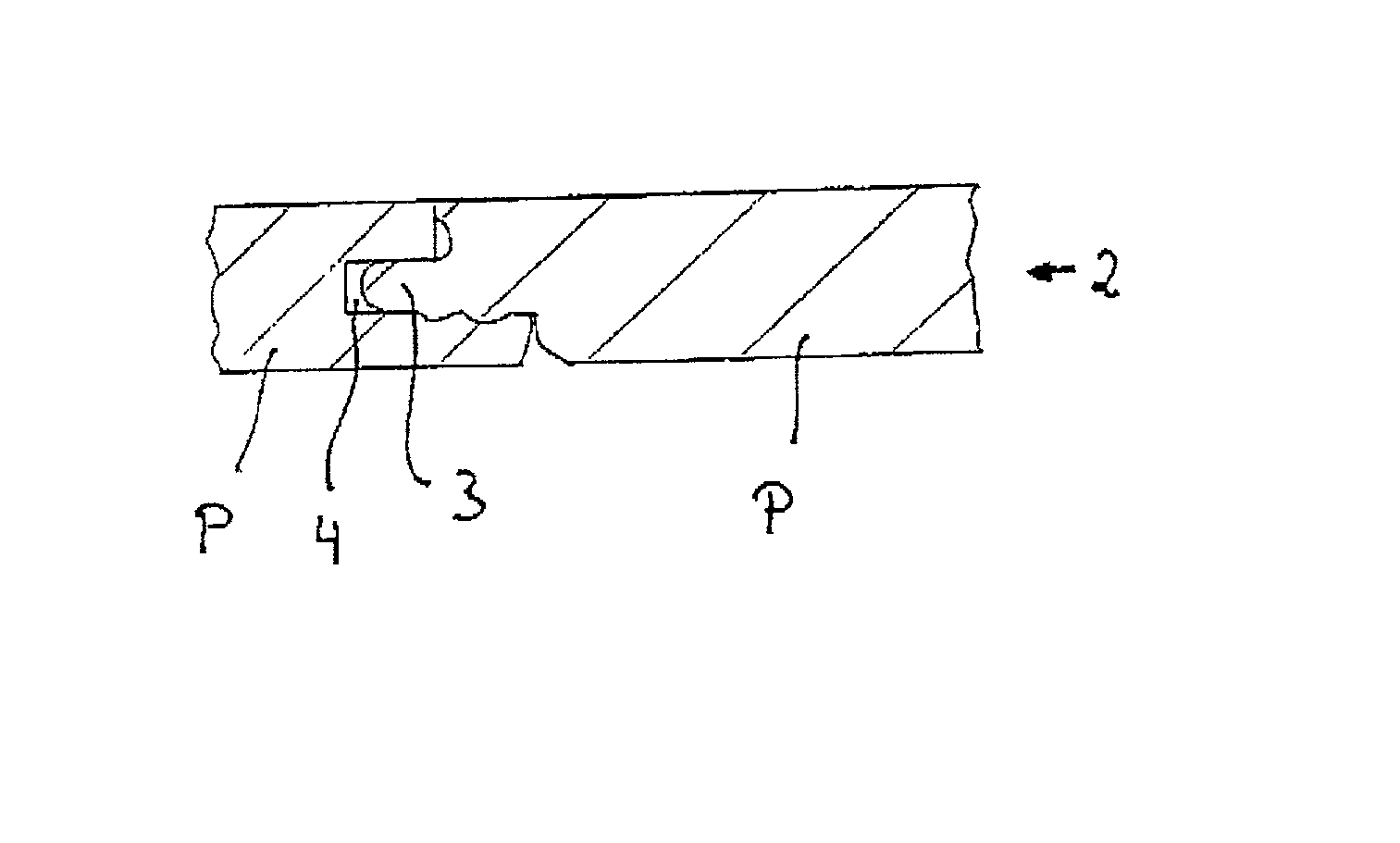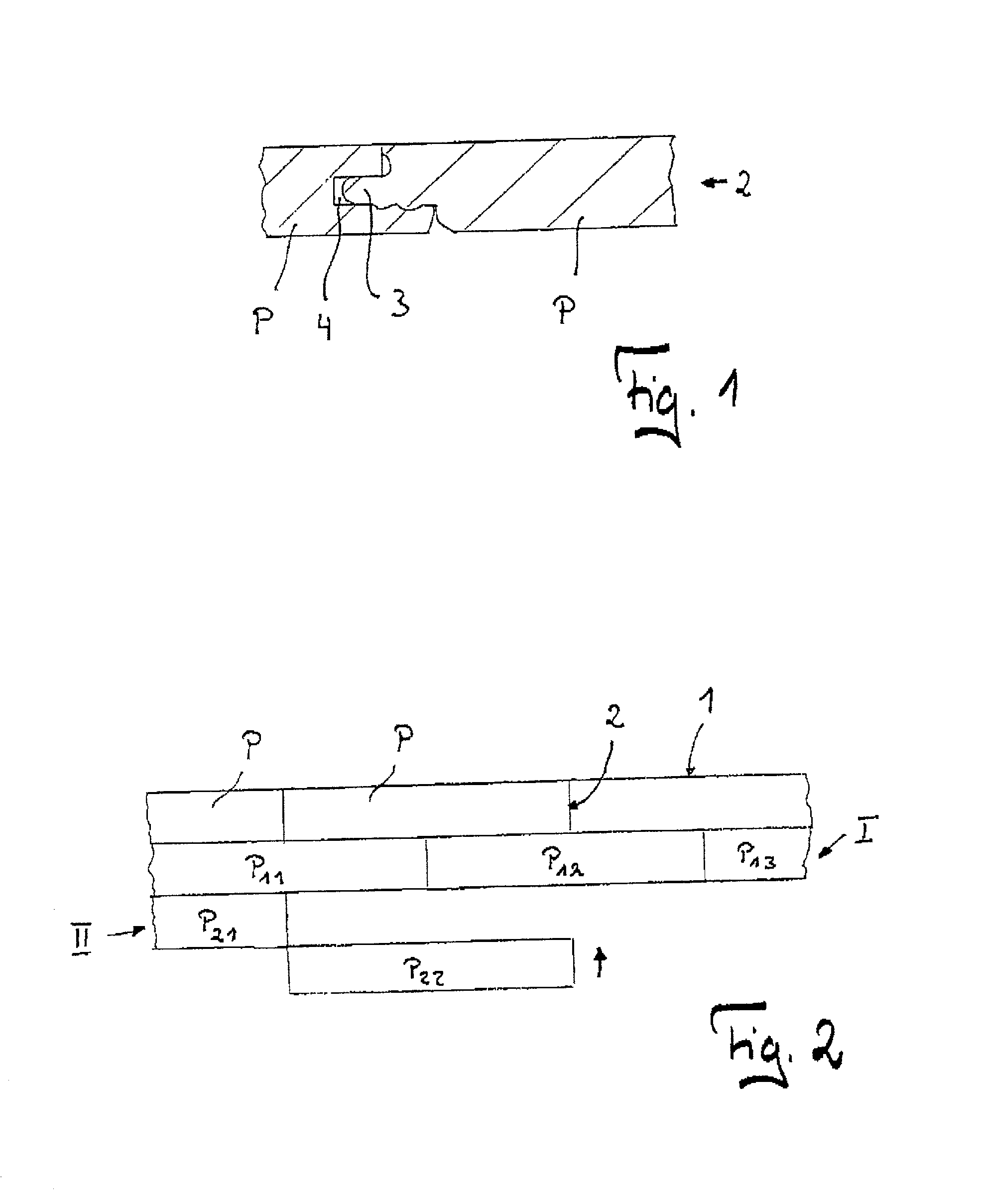Process of laying floorboards
a technology of floorboards and laying boards, which is applied in the field of laying floorboards, can solve the problems of damage to the tongue and groove joint, the risk of the tongue splitting off or the groove breaking apart, and the first procedure described is quite complicated to execute, so as to reduce the risk of damaging the edge, reduce the risk of splitting off or the groove breaking apart, and reduce the risk of damag
- Summary
- Abstract
- Description
- Claims
- Application Information
AI Technical Summary
Benefits of technology
Problems solved by technology
Method used
Image
Examples
Embodiment Construction
[0019] As shown in the accompanying drawings, the boards P have on their longitudinal sides 1 and their transverse sides 2, tongues 3 and grooves 4 in matching opposite positions. On the underside of the tongue 3 there are projections, not described here in further detail, which can engage in recesses, also not described here in further detail, on the lower lip of the groove 4. The boards P can be locked together by pushing the tongue 3 into the groove 4. The constructional details of the boards will not be further explained. In this regard, reference may be made to German patent No. 198 21 200.
[0020] For the purpose of laying the floor, the first step is to make a first row I of boards P.sub.11, P.sub.12, P.sub.13, . . . P.sub.1n from wall to wall of a room, these boards P.sub.11, . . . P.sub.1n being jointed on their transverse sides. In a following row II, a first board P.sub.21 is jointed on its longitudinal side with the first board P.sub.11 in the previously laid first row I. ...
PUM
| Property | Measurement | Unit |
|---|---|---|
| density | aaaaa | aaaaa |
| swelling | aaaaa | aaaaa |
| length | aaaaa | aaaaa |
Abstract
Description
Claims
Application Information
 Login to View More
Login to View More - R&D
- Intellectual Property
- Life Sciences
- Materials
- Tech Scout
- Unparalleled Data Quality
- Higher Quality Content
- 60% Fewer Hallucinations
Browse by: Latest US Patents, China's latest patents, Technical Efficacy Thesaurus, Application Domain, Technology Topic, Popular Technical Reports.
© 2025 PatSnap. All rights reserved.Legal|Privacy policy|Modern Slavery Act Transparency Statement|Sitemap|About US| Contact US: help@patsnap.com


